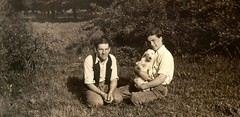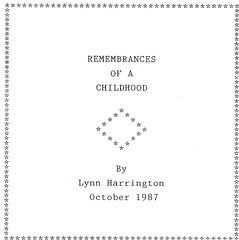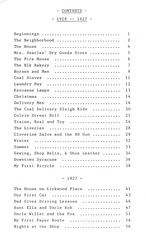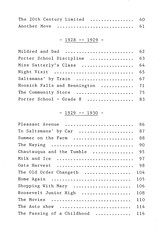Laurence Parsons had a bit of a challenging start in his tenure as the Fourth Earl of Rosse.
He was only 26 years old when news of his revered father's death in Dublin reached Birr Castle, the family home in the Irish midlands, in the Fall of 1867. Both his father and his grandfather had not acceded to the position until they were in their forties, but youth alone was probably not the most daunting aspect of his succession. His father, William Parsons, Third Earl of Rosse, was a multi-talented man of great accomplishment and high reputation. While primarily remembered today as the designer and maker of a revolutionary huge telescope, the Third Earl was also much admired in the midlands for his family's work to alleviate the effects in King's County (now County Offaly) of the 1840s' Great Hunger and among the Irish people for his clear-headed approach to governmental duties. While not entitled to a seat in the House of Lords by birth alone, he was elected as an Irish Representative Peer in 1845, thus gaining his place in London's halls of power through accomplishment rather than DNA.
 The Third Earl of Rosse and his Countess, Mary, in May of 1850. They are shown looking over drawings of a galaxy whose spiral form was first seen by Lord Rosse using his "Leviathan of Parsonstown" during the prior decade. This drawing is by Charles Piazzi-Smyth, a renowned astronomer (and, some would say, crackpot as concerns the pyramids of Egypt), one of many luminaries of science who frequented Birr Castle in the mid-1800s. Illustration from and courtesy of the Birr Castle Archives.
The Third Earl of Rosse and his Countess, Mary, in May of 1850. They are shown looking over drawings of a galaxy whose spiral form was first seen by Lord Rosse using his "Leviathan of Parsonstown" during the prior decade. This drawing is by Charles Piazzi-Smyth, a renowned astronomer (and, some would say, crackpot as concerns the pyramids of Egypt), one of many luminaries of science who frequented Birr Castle in the mid-1800s. Illustration from and courtesy of the Birr Castle Archives.
Young Laurence Parsons clearly had big hessians to fill. As though that weren't enough, though, fate dealt him a pair of odd and disquieting incidents in his first two years on the job.
The Policemen Would Listen to No Explanation
Just a little more than a year after his father's death, in the late Fall of 1868, Lord Rosse and a party of friends went hunting north of Parsonstown (now Birr) in the general direction of Banagher on the River Shannon. Included in the party were the Earl's 20-year-old brother Randal and two teenaged brothers, Clere and Charles. As the party rode southward toward home in the gathering twilight, they were accosted -- not by outlaws, but by the law. A yellowing newspaper clipping in the Birr Castle Archives recounts the incident thusly:
A Lord Taken Prisoner by Drunken Policemen Under Menace of a Loaded Rifle.
(From Our Correspondent)
Parsonstown, Tuesday.
An incident among the strangest in the history of the police force, and one which is affording considerable local gossip, has just happened in this neighbourhood. The Earl of Rosse, accompanied by his brothers and some friends, were returning along the Banagher road from shooting on Saturday evening, and within a mile of the Castle they were met by some Constabulary of the Annah Station, who peremptorily ordered the young nobleman to halt, one of the policemen giving proof that the command was no joke by deliberately loading his rifle and making the most convincing gestures. His lordship and party had the presence of mind to forego a long parleying, simply contenting themselves by stating who they were. But the policemen would listen to no statement or explanation, and his lordship and his party had no alternative but to save themselves from the indignity of the handcuffs, or, probably, a personal encounter, by going with the policemen into town, where the tables were soon turned, as the Sub-Inspector, on hearing the strange narrative, forthwith had the whole of his Lordship's late escort taken into custody. The Constabulary escapade is to form the subject of an investigation, and very likely will lead to unpleasant results to the policemen, two of whom at least were intoxicated, and all were in charge of the Constable of the Station.
The escapade did, in fact, lead to unpleasant results for the police involved. Also in the castle archives is this groveling letter from the island's top cop of the time, the Chief Constable of Ireland in Dublin:
Constabulary Office, Dublin Castle
8 Dec. 1868
My Lord,
I have received, and read with pain, the report of the misconduct of the party of Constabulary towards your Lordship and your friends on the evening of the 28th.
I am glad to think that conduct like that in question towards any individual is, on the part of the Constabulary of very rare occurrence. But that such an outrageous and uncalled for interference with a person of your Lordship's position, and in your own immediate neighbourhood should have taken place, is I believe without precedent.
My duty calls upon me to recommend the dismissal of Constable Burke and Sub-Constable Coyle.
As regards the former, I may mention that he has served 30 years without ever having been, until now, reported for drunkenness, - and that he is married and has a large family.
Should you think fit for these reasons to interfere in his behalf, I shall consider the discipline of the Force...
... and, unfortunately, the last page of the letter is missing. There is also no record of a response from the young Earl, so the fate of Constable Burke and his ability to continue to feed his large family is not now known. A curt scrawl at the top of the letter in the Fourth Earl's handwriting gives us a clue, though: "Constabulary defence of annoyance to our Party." Burke probably didn't fare well.
Less than a year later, an unprecedented and much darker event not of his making shook Laurence Parsons's family.
(From Our Correspondent)
Parsonstown, Tuesday.
An incident among the strangest in the history of the police force, and one which is affording considerable local gossip, has just happened in this neighbourhood. The Earl of Rosse, accompanied by his brothers and some friends, were returning along the Banagher road from shooting on Saturday evening, and within a mile of the Castle they were met by some Constabulary of the Annah Station, who peremptorily ordered the young nobleman to halt, one of the policemen giving proof that the command was no joke by deliberately loading his rifle and making the most convincing gestures. His lordship and party had the presence of mind to forego a long parleying, simply contenting themselves by stating who they were. But the policemen would listen to no statement or explanation, and his lordship and his party had no alternative but to save themselves from the indignity of the handcuffs, or, probably, a personal encounter, by going with the policemen into town, where the tables were soon turned, as the Sub-Inspector, on hearing the strange narrative, forthwith had the whole of his Lordship's late escort taken into custody. The Constabulary escapade is to form the subject of an investigation, and very likely will lead to unpleasant results to the policemen, two of whom at least were intoxicated, and all were in charge of the Constable of the Station.
The escapade did, in fact, lead to unpleasant results for the police involved. Also in the castle archives is this groveling letter from the island's top cop of the time, the Chief Constable of Ireland in Dublin:
Constabulary Office, Dublin Castle
8 Dec. 1868
My Lord,
I have received, and read with pain, the report of the misconduct of the party of Constabulary towards your Lordship and your friends on the evening of the 28th.
I am glad to think that conduct like that in question towards any individual is, on the part of the Constabulary of very rare occurrence. But that such an outrageous and uncalled for interference with a person of your Lordship's position, and in your own immediate neighbourhood should have taken place, is I believe without precedent.
My duty calls upon me to recommend the dismissal of Constable Burke and Sub-Constable Coyle.
As regards the former, I may mention that he has served 30 years without ever having been, until now, reported for drunkenness, - and that he is married and has a large family.
Should you think fit for these reasons to interfere in his behalf, I shall consider the discipline of the Force...
... and, unfortunately, the last page of the letter is missing. There is also no record of a response from the young Earl, so the fate of Constable Burke and his ability to continue to feed his large family is not now known. A curt scrawl at the top of the letter in the Fourth Earl's handwriting gives us a clue, though: "Constabulary defence of annoyance to our Party." Burke probably didn't fare well.
Less than a year later, an unprecedented and much darker event not of his making shook Laurence Parsons's family.
You Killed Her, You Bury Her
 St. Brendan's Church of Ireland, Birr, on a gloomy January day, 2011. Photograph courtesy of and copyright by Stephen Callaghan. (Mr. Callaghan is very skilled and talented with a camera; I urge you to come back later and click on his name to see what I mean.)
St. Brendan's Church of Ireland, Birr, on a gloomy January day, 2011. Photograph courtesy of and copyright by Stephen Callaghan. (Mr. Callaghan is very skilled and talented with a camera; I urge you to come back later and click on his name to see what I mean.)
Mary King was born near Ferbane, a village about ten miles north of Birr Castle along the road from Parsonstown (now Birr) to Athlone. Her mother, Harriette, was Laurence Parsons's great-aunt, and the King family were frequent visitors to Birr Castle during his father's heyday. In her teens, Mary became acquainted with many of the prestigious scientists who visited Birr Castle and its great telescope and other engineering marvels -- and began her own lifelong fascination with science in general and optical devices in particular. Girls of the time in Ireland were not afforded formal education, but Mary's inquisitiveness, intelligence, and moxie propelled her to eventual scientific prominence anyway. Among other distinctions she gathered as an adult, in the 1860s she was one of only three women entitled to receive the Monthly Notices of the Royal Astronomical Society -- the other two being Mary Sommerville (after whom Sommerville College of Oxford University is named) and Queen Victoria.
 Mary King Ward (probable identification based on hairstyle) in a detail from one of Piazzi-Smyth's drawings. Her likeness is more commonly seen in a photograph by Countess Mary Rosse, wife of the Third Earl of Rosse, herself a pioneering woman in science and technology. Illustration from and courtesy of the Birr Castle Archives.
Mary King Ward (probable identification based on hairstyle) in a detail from one of Piazzi-Smyth's drawings. Her likeness is more commonly seen in a photograph by Countess Mary Rosse, wife of the Third Earl of Rosse, herself a pioneering woman in science and technology. Illustration from and courtesy of the Birr Castle Archives.
In addition to a keen scientific mind, Mary was intensely enthusiastic about bringing the excitement of science to young people. She wrote several very successful books for youngsters, published as were all of her writings under her married name, Mary Ward. She drew the illustrations for her books herself, and they embody even today her lighthearted earnestness. Of her books for children she said that she wanted them to be "an agreeable bait by means of which unwary youth may find themselves caught in the meshes of science while seeking only amusement."
 Bug fun: "The Insect Maypole" by Mary Ward as reproduced in Whatever Shines Should Be Observed by Susan M. P. McKenna-Lawlor (see recommended reading at the end of this post.)
Bug fun: "The Insect Maypole" by Mary Ward as reproduced in Whatever Shines Should Be Observed by Susan M. P. McKenna-Lawlor (see recommended reading at the end of this post.)
Mary's personal life was not very easy. When she was 27 she married Henry Ward, a striking military man who had served in the Crimea and who was a son of Viscount Bangor of County Down in the Northeast of Ireland. A year after their marriage, Henry made a disastrous career choice: he chose not to have one. He resigned his commission as Captain and devoted the rest of his life to social activities and sports, thus burdening his family with aristocratic activities without aristocratic income. It fell to Mary to provide for the family -- and to bear his eleven children -- but there is no evidence that she ever expressed anything but good cheer and optimism. They moved from home to home, each more austere than the previous one, until they finally wound up in a simple, unfurnished Dublin rental house in 1868.
The following year, in August of 1869, she and Henry made the trip halfway across Ireland to visit Birr Castle and, presumably, to check on how young Laurence was doing as Lord Rosse. On Tuesday afternoon, August 31st, one of the Parsons engineering marvels was brought out for a romp: a self-propelled steam carriage of the Third Earl's design which could reach speeds up to seven miles per hour on a good road. The family tutor (home schooling is a long tradition in the Parsons family), Richard Biggs, is said to have been steering the contraption, the younger two boys, Clere and Charles, were feeding fuel to the boiler, and Mary and Henry were perched on the passengers' bench. The auto steamed out of the gates of the Castle demesne and up Oxmantown Mall toward St. Brendan's Church of Ireland at its junction with the road to Tullamore. Randal was walking along behind; the only brother not present was the young Earl himself.
At the church, Mr. Biggs steered the steamer right, toward the center of Parsonstown and into disaster.
There are conflicting accounts of exactly what happened -- Biggs may or may not have run over a curbstone, the vehicle may or may not have overturned -- but somehow Mary was thrown from the bench to the ground and was crushed by one of the vehicle's massive iron wheels. She was taken to a nearby physician's home where she died within minutes of her grievous injuries, "a broken neck, her jaw was greatly fractured, and she was bleeding from the ears" according to the doctor's statement.
Mary Ward, noted scientist, educator, and pioneer in women's rightful ability to contribute to science, had become the world's first automobile fatality.
In grief and anger, the young Lord Rosse had the steam carriage destroyed, and no photograph or drawing or plan of it exists. Her husband Henry was obviously unable to provide for a fitting funeral and burial, so Lord Rosse sent a telegram to Mary's brother John about the issue. His response was, "You killed her, you bury her." Mary Ward remains the sole "non-lineal" member of the extended family to be entombed in the Parsons vault in Birr.
 St. Brendan's Church of Ireland, Birr, on a gloomy January day, 2011. Photograph courtesy of and copyright by Stephen Callaghan. (Mr. Callaghan is very skilled and talented with a camera; I urge you to come back later and click on his name to see what I mean.)
St. Brendan's Church of Ireland, Birr, on a gloomy January day, 2011. Photograph courtesy of and copyright by Stephen Callaghan. (Mr. Callaghan is very skilled and talented with a camera; I urge you to come back later and click on his name to see what I mean.)
 Mary King Ward (probable identification based on hairstyle) in a detail from one of Piazzi-Smyth's drawings. Her likeness is more commonly seen in a photograph by Countess Mary Rosse, wife of the Third Earl of Rosse, herself a pioneering woman in science and technology. Illustration from and courtesy of the Birr Castle Archives.
Mary King Ward (probable identification based on hairstyle) in a detail from one of Piazzi-Smyth's drawings. Her likeness is more commonly seen in a photograph by Countess Mary Rosse, wife of the Third Earl of Rosse, herself a pioneering woman in science and technology. Illustration from and courtesy of the Birr Castle Archives.
In addition to a keen scientific mind, Mary was intensely enthusiastic about bringing the excitement of science to young people. She wrote several very successful books for youngsters, published as were all of her writings under her married name, Mary Ward. She drew the illustrations for her books herself, and they embody even today her lighthearted earnestness. Of her books for children she said that she wanted them to be "an agreeable bait by means of which unwary youth may find themselves caught in the meshes of science while seeking only amusement."
 Bug fun: "The Insect Maypole" by Mary Ward as reproduced in Whatever Shines Should Be Observed by Susan M. P. McKenna-Lawlor (see recommended reading at the end of this post.)
Bug fun: "The Insect Maypole" by Mary Ward as reproduced in Whatever Shines Should Be Observed by Susan M. P. McKenna-Lawlor (see recommended reading at the end of this post.)
Mary's personal life was not very easy. When she was 27 she married Henry Ward, a striking military man who had served in the Crimea and who was a son of Viscount Bangor of County Down in the Northeast of Ireland. A year after their marriage, Henry made a disastrous career choice: he chose not to have one. He resigned his commission as Captain and devoted the rest of his life to social activities and sports, thus burdening his family with aristocratic activities without aristocratic income. It fell to Mary to provide for the family -- and to bear his eleven children -- but there is no evidence that she ever expressed anything but good cheer and optimism. They moved from home to home, each more austere than the previous one, until they finally wound up in a simple, unfurnished Dublin rental house in 1868.
The following year, in August of 1869, she and Henry made the trip halfway across Ireland to visit Birr Castle and, presumably, to check on how young Laurence was doing as Lord Rosse. On Tuesday afternoon, August 31st, one of the Parsons engineering marvels was brought out for a romp: a self-propelled steam carriage of the Third Earl's design which could reach speeds up to seven miles per hour on a good road. The family tutor (home schooling is a long tradition in the Parsons family), Richard Biggs, is said to have been steering the contraption, the younger two boys, Clere and Charles, were feeding fuel to the boiler, and Mary and Henry were perched on the passengers' bench. The auto steamed out of the gates of the Castle demesne and up Oxmantown Mall toward St. Brendan's Church of Ireland at its junction with the road to Tullamore. Randal was walking along behind; the only brother not present was the young Earl himself.
At the church, Mr. Biggs steered the steamer right, toward the center of Parsonstown and into disaster.
There are conflicting accounts of exactly what happened -- Biggs may or may not have run over a curbstone, the vehicle may or may not have overturned -- but somehow Mary was thrown from the bench to the ground and was crushed by one of the vehicle's massive iron wheels. She was taken to a nearby physician's home where she died within minutes of her grievous injuries, "a broken neck, her jaw was greatly fractured, and she was bleeding from the ears" according to the doctor's statement.
Mary Ward, noted scientist, educator, and pioneer in women's rightful ability to contribute to science, had become the world's first automobile fatality.
In grief and anger, the young Lord Rosse had the steam carriage destroyed, and no photograph or drawing or plan of it exists. Her husband Henry was obviously unable to provide for a fitting funeral and burial, so Lord Rosse sent a telegram to Mary's brother John about the issue. His response was, "You killed her, you bury her." Mary Ward remains the sole "non-lineal" member of the extended family to be entombed in the Parsons vault in Birr.
Coda
Mary Ward's spirit lives on in a very strange yet delightful way. One of her great-granddaughters is Lalla Ward, a former actress perhaps most well-known for her role as Princess Astra and the second incarnation of Romana in the great television series "Doctor Who." Lalla, born Sarah Ward, retired from acting in 1992 after marrying biologist and author Richard Dawkins.
She now draws illustrations for her husband's science books. Great-grandma would be proud.
Mary Ward's spirit lives on in a very strange yet delightful way. One of her great-granddaughters is Lalla Ward, a former actress perhaps most well-known for her role as Princess Astra and the second incarnation of Romana in the great television series "Doctor Who." Lalla, born Sarah Ward, retired from acting in 1992 after marrying biologist and author Richard Dawkins.
She now draws illustrations for her husband's science books. Great-grandma would be proud.
==================================
Strongly recommended reading:
The chapter on Mary Ward in Whatever Shines Should Be Observed by Susan M. P. McKenna-Lawlor, volume 292 in the Astrophysics and Space Science Library
Section 1 of Chapter 6, "Teenagers without their father", in From Galaxies to Turbines: Science, Technology and the Parsons Family by W. Garrett Scaife
The chapter on Mary Ward in Whatever Shines Should Be Observed by Susan M. P. McKenna-Lawlor, volume 292 in the Astrophysics and Space Science Library
Section 1 of Chapter 6, "Teenagers without their father", in From Galaxies to Turbines: Science, Technology and the Parsons Family by W. Garrett Scaife
==========================================
Steam-powered carriages can still be seen in County Offaly -- at least once a year, in the Birr Heritage Week parade. Below is a video clip of one such that Diane and I took in August, 2006. Part of the south wall of Birr Castle is in the background. A much higher-resolution version can be seen here.















































